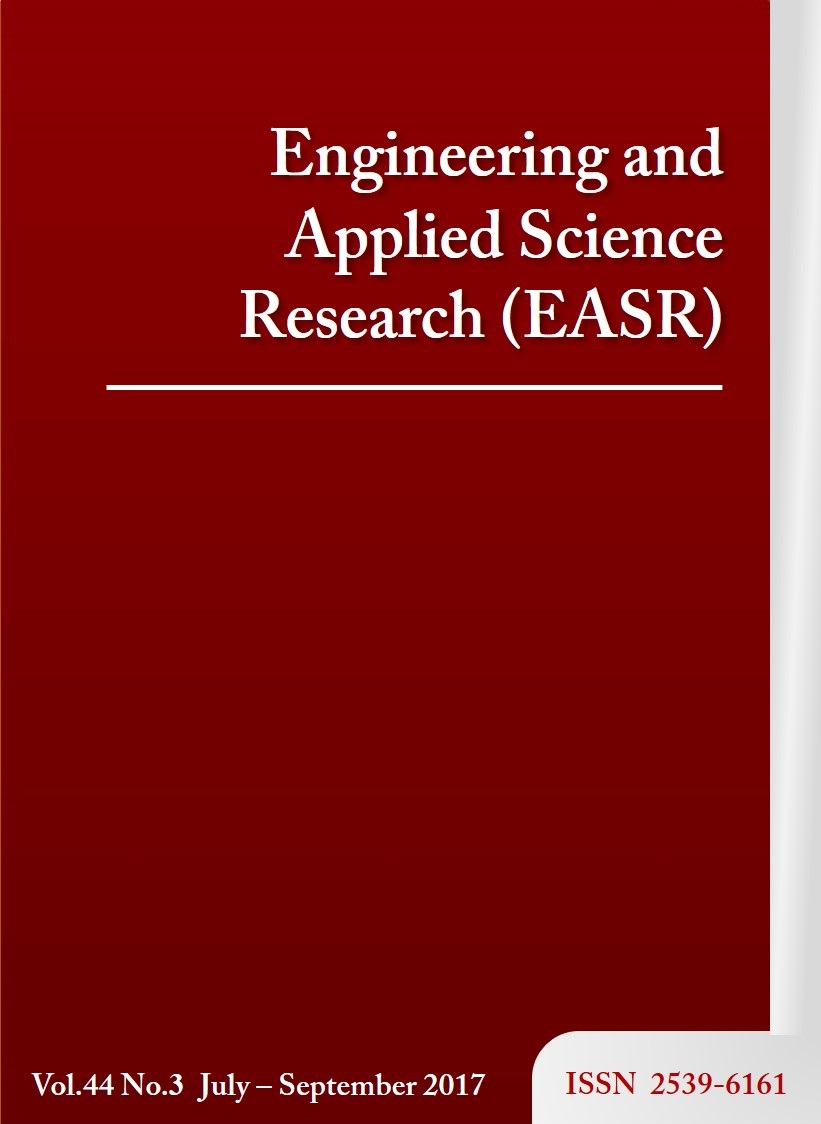Use of green washing fluids in a washing process for dioxin contaminated soils
Main Article Content
Abstract
High levels of dioxin contamination in soil have significant environmental challenges. Soil washing is a successful remediation process that is primarily used to treat coarse soils. Several literature studies have used various kinds of chemical washing liquids to remove dioxins from soils, though there are secondary environmental effects. This study intends to develop environmentally friendly soil washing methods that are effective in dioxin removal at an acceptable cost. Sugarcane wine, compost leachate, and ground fish broth were chosen as potential washing liquids. Each washing liquid was analyzed to determine its content of semivolatile organic compounds (SVOCs) and volatile organic compounds (VOCs). These compounds are related to their bio-surfactant content. Several of the identified compounds had properties to help remove dioxins from contaminated soil. In the experiments, high removal efficiencies were observed, up to 70%~95% after five to six washes. Although effective removal was observed, a significant amount of wastewater was produced and the problems were not completely resolved. Thus, the optimal washing conditions are necessary to minimize the overall costs, while improving the process effectiveness. Moreover, an appropriate treatment method is required for wastewater containing dioxins.
Article Details
This work is licensed under a Creative Commons Attribution-NonCommercial-NoDerivatives 4.0 International License.
References
United States Environmental Protection Agency. EPA's Reanalysis of Key Issues Related to Dioxin Toxicity and Response to NAS Comments (External Review Draft). United States Environmental Protection Agency, Washington, DC, USA; 2010.
Lindner G, Jenkins AC, McCormack J, Adrian RC. Dioxins and furans in emissions from medical waste incinerators. Chemosphere. 1990;20(10):1793-800.
Masunaga S, Takasuga T, Nakanishi J. Dioxin and dioxin-like PCB impurities in some Japanese agrochemical formulations. Chemosphere. 2001;44:873-85.
Holt E, Von Der Recke R, Vetter W, Hawker D, Alberts V, Kuch B, Weber R, Gaus C. Assessing dioxin precursors in pesticide formulations and environmental samples as a source of octachlorodibenzo-p-dioxin in soil and sediment. Environ Sci Tech. 2008;42(5):1472-8.
Hamby DM. Site remediation techniques supporting environmental restoration activities-a review. Sci Total Environ. 1996;191(3):203-24.
Jonsson S, Lind H, Lundstedt S, Haglund P, Tysklind M. Dioxin removal from contaminated soils by ethanol washing. J Hazard Mater. 2010;179(1-3):393-9.
Lee BD, Hosomi M. Degradation of benzo(a)pyrene
in ethanol washing solution of contaminated soil by hybrid treatment. Kagaku Kogaku Ronbunshu. 2001;27(5):599-603.
Meguro H, Lee BD, Nakai S, Hosomi M. Evaluation of ethanol washing on dioxins-polluted soil and sediment based on adsorption relationships. Environ Tech. 2008;29(3):325-32.
Isosaari P, Tuhkanen T, Vartiainen T. Use of olive oil for soil extraction and ultraviolet degradation of polychlorinated dibenzo-p-dioxins and dibenzofurans. Environ Sci Tech. 2001;35(6):1259-65.
Taiwan National Institute of Environmental Accreditation. Method M801.13B: Dioxins and Furans analysis method by Gas Chromatography / High Resolution Mass Spectrometry (GC/HRMS). Taiwan National Institute of Environmental Accreditation (NIEA), Zhongli City, Taiwan, R.O.C.; 2014.
Gunstone FD. Fatty acid and lipid chemistry. UK: Springer; 1996.
Pannu JK, Singh A, Ward OP. Influence of peanut oil on microbial degradation of polycyclic aromatic hydrocarbons. Can J Microbiol. 2003;49(8):508-13.
Gong Z, Alef K, Wilke BM, Li P. Dissolution and removal of PAHs from a contaminated soil using sunflower oil. Chemosphere. 2005;58(3):291-8.
Gong Z, Wilke B, Alef K, Li P, Zhou Q. Removal of polycyclic aromatic hydrocarbons from manufactured gas plant-contaminated soils using sunflower oil : Laboratory column experiments. Chemosphere. 2006;62(5):780-7.
Chi FH, Leu MH, Tsao CW, Shiu GC. Removal of anthracene contaminated soil using micro-emulsified solvent and mixed surfactant. Sustain Environ Res. 2011;21(3):181-6.



